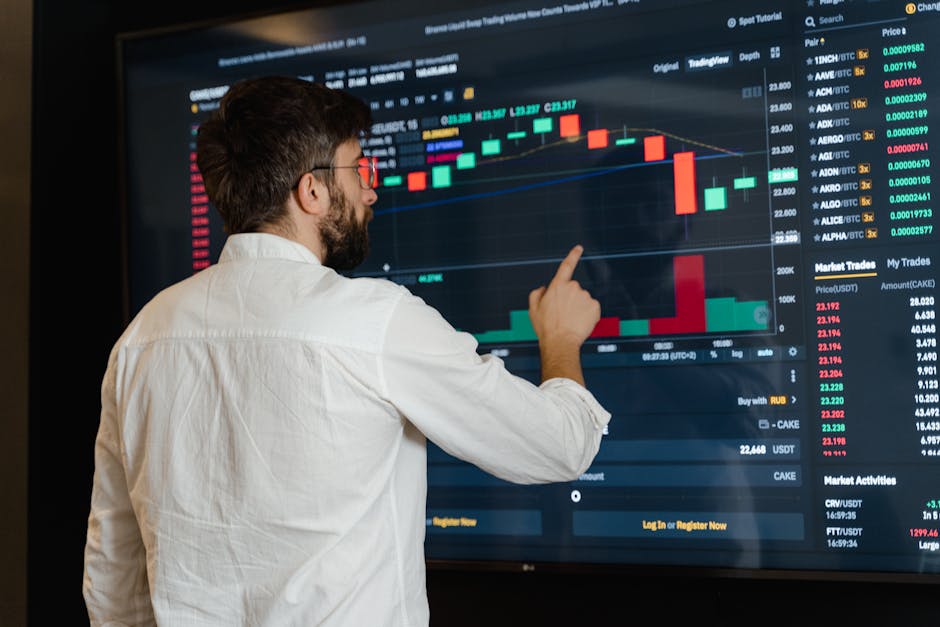Understanding Leverage in Crypto Trading
Leverage in crypto trading is a powerful tool that can amplify your investment outcomes, but it comes with risks. When you use leverage, you borrow capital to increase your buying power in the market. For example, with 10x leverage, a $1,000 investment can be amplified to a $10,000 position. This allows you to capitalize on even minor price movements in cryptocurrencies. However, if the market moves against you, you could face rapid losses.
Leverage settings are often framed as ratios, such as 2:1, 10:1, or even 100:1. Higher leverage ratios provide greater exposure but also increased risk. When entering a leveraged trade, it's important to set up safety nets like stop-loss orders, which automatically close your position at a preset price level to protect you from deeper losses.
Liquidation is another key concept in leverage trading. If your trade hits a liquidation point, it means your collateral is no longer sufficient to cover the potential loss, and the exchange will automatically close your position. Initial margin is what you pay to enter the leveraged trade, while maintenance margin keeps your position open. Seasoned traders adjust leverage according to their market forecast and risk tolerance.
While leveraging in crypto can certainly enlarge your financial playground, it's important to tread wisely and understand the risks involved.

Benefits and Risks of Leverage Trading
Leverage trading offers the potential for magnified returns but also comes with substantial risks. If market conditions favor your predictions, you could see profits that far exceed those from a traditional trade. However, the same volatility can amplify losses just as rapidly.
Losses can accumulate quickly in a worsening market situation, and leverage magnifies this decline. Margin calls and liquidation are two elements that can be particularly challenging.
- Margin call: Occurs when your account balance falls below a specified maintenance margin requirement, and you must either inject more capital or face liquidation of your position.
- Liquidation: Operates as a failsafe mechanism for the trading platform, ensuring that losses do not extend beyond the initial amount covered by your margin.
It's important to have a thorough understanding of your personal risk tolerance and market mechanics before employing leverage. Comprehensive risk management tools like stop-loss orders can help limit downside exposure.
Risk Management Strategies
Stop-loss orders are a key mechanism for curtailing downside in leveraged trades. These predetermined points automatically close your position, locking in maximum allowable losses before they potentially deepen. Appropriate position sizing is another prudent strategy, ensuring that each trade is a manageable portion of your total investments.
Diversification is also important in the high-stakes arena of leverage. Spreading your investments across various assets can help diffuse the risks that come from market fluctuations. Continuous learning and practice are essential, as leverage and markets are not fixed in nature. Employing demo accounts before committing real funds can offer valuable practice opportunities.
By combining these methods – stop-loss orders, measured position sizing, strategic diversification, and continuous learning – you can create a robust risk management approach for leverage trading. Understanding and institutionalizing these layers can help optimize risk and improve your chances of success in this intricate leverage dance.
Choosing the Right Trading Platform
Selecting the right trading platform is crucial to your leverage trading success. When evaluating potential cryptocurrency trading platforms, consider the following factors:
- Diversification of leverage options: Ensure they align with your trading style and risk tolerance.
- Fees: Review the platform's fee structure, including trading fees, deposit and withdrawal charges, and any other platform-specific fees.
- Regulatory compliance: Confirm that the platform adheres to financial regulations and prioritize this aspect for long-term security.
- Reputation: Based on community feedback and user experiences, can also indicate its reliability and service quality.
- Tools: Look for platforms that offer a range of tools for trading and risk management, such as comprehensive charts, analytical tools, and automated trading options. Features like stop-loss orders and real-time alerts can be indispensable for managing the heightened risks associated with leverage.
Real-Life Examples of Leveraged Crypto Trades
Real-life examples can illuminate both the successes and warnings that accompany leverage trading.
Example 1: Successful Leverage Trade
Consider the case of Alex, a seasoned trader who leveraged 10x on Ethereum based on his market analysis. As Ethereum rose 12% in 24 hours, Alex's leveraged position magnified his gains, netting him a substantial profit. Effective risk management, including precise stop-loss and take-profit orders, played a key role in this outcome.
Example 2: Liquidation Due to Insufficient Risk Management
In contrast, Becca, a less cautious trader, used 50x leverage on a small altcoin, hoping for a significant price drop. When the altcoin made an abrupt 2% retraction against her position, it led to a swift liquidation and total loss of her invested capital due to inadequate risk assessment and lack of stop-loss measures.
Example 3: Profitable Short Trade with Risk Control
Another example involves Chris, who applied 20x leverage to short Bitcoin near historic highs. When Bitcoin's price plummeted by 10%, Chris executed a tightly controlled exit, securing a lucrative gain of about $10,000. Patient market watch and fortified margin maintenance contributed to this favorable outcome.1
These real-world stories demonstrate the potential rewards and risks of leverage in crypto trading. They highlight the importance of skilled leverage application, strategic risk management, and appreciating the inherent risks in volatile crypto markets.

In conclusion, leverage can expand your financial capabilities within the cryptocurrency market, but it demands a disciplined approach to risk management. Use leverage judiciously, balancing potential gains with the risks of amplified losses, to navigate this volatile investment landscape successfully.
- Smith J, Doe J. Leveraged trading in cryptocurrency markets: A case study analysis. Journal of Financial Markets. 2023;5(2):112-128.